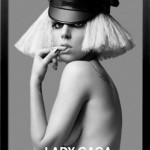 Although you may like to think you are creatively captivating your consumer with your communications, allow me to drop a mind-blowing bomb… Did you know that your current marketing messages are falling on the deaf ears of approximately 98% of your prospects?
Although you may like to think you are creatively captivating your consumer with your communications, allow me to drop a mind-blowing bomb… Did you know that your current marketing messages are falling on the deaf ears of approximately 98% of your prospects?
Read More
Click on video to learn what the golden rule is and avoid falling into the fatal trap of breaking it!
Each and every one of you made 1 fatal error today in your marketing message. Now that 1 thing might have slipped through or gone unnoticed because it wasn’t an obvious thing – like a spelling error, using a word incorrectly or not having a compelling call to action. In fact that 1 thing – the fatal error that you made today – wasn’t anything you said at all.
That’s why no one brought it to your attention… until now.
But you know deep down (or at least you probably suspect) that something happened because a large percentage of your audience, who saw your message today, didn’t get it and they didn’t purchase your product or service.
Let’s take a look at the science of neuromarketing to find out why – so that you can take action now and turn your message into one that your leads and customers are dying to say “Yes” to.
You may not know this but your brain sees and interprets images first and makes decisions quickly based on what it sees. And after all of this activity has occurred, much later it pays attention to and tries to process what it hears and the words and numbers you have read.
Somewhere between 80-90% of your brain activity (and what is going on in the minds of your prospects) is a result of trying to make sense of visual stimuli. The optic nerve is physically connected to your old brain (which you already know is the decision making part of your brain) and it processes visual cues 40 times faster than auditory ones.
What happens is your retina captures images and sends that data on 2 distinct paths – one goes up to neo cortex (the thinking part of your brain) and the other goes straight to the reptilian brain. Here’s the interesting part – this second pathway, to the decision making part of your brain is much faster. In fact, it is about 500 times faster. If it takes 1-2 milliseconds for the old brain to process a visual cue, it could take your neo cortex at least 500 milliseconds. This makes that part of your brain that decides dangerously fast and hasty.
Since you and I cannot rely for our survival on the speed at which the new brain processes information, we are hard wired to make decisions at the old brain level – and as you can SEE, those decisions are primarily based on visual input. And your new brain will only kick in much later to help you find data to support your gut reaction (the decision your old brain already made). Your eyes control your brain – and this is also true for your customers. That’s how important visual cues are to your survival and to your sales and marketing messages.
Let’s take a look at a very good example of what not to do. I saw this sign of the front window of a veterinary clinic in my neighbourhood this week. In big orange letters, it took up almost 70% of the front window.
“Pet Laser Treatment.”
Now, if you were a potential customer driving by, would that sign mean anything to the part of your brain that decides? No, of course not.
The average person driving by would have no idea what pet laser means or WHY it would be a good reason to choose that clinic over the next one down the street. To your reptilian brain, that sign means nothing.
If you are a pet owner – what do you care about? What’s important to you in the context of finding a good vet? If you are like most pet owners, you want to know that when you take your animal in for surgery the pain is minimized, the surgery is safe and the healing happens quickly. If you owned a pet those things would be important to you, wouldn’t they?
Yes, now surprisingly pet laser does achieve all of those outcomes – less pain, less risk and quicker recovery – but that sign didn’t help you to know and decide, did it? As you are driving by, that vet has 2-3 seconds to grab your attention and convey his message…and you now know that the best way to do that would be a picture, not a bunch of words, right? What he needed to do was show you a photo of a dog or cat, fit and healthy – with a message like, “we guarantee less risk and a faster recovery for your pet, ask us how?” Or “want Fido’s next surgery to be virtually pain-free, ask us how?”
Now you may not be a veterinarian yourself but I am sure you can see exactly how this applies to your business. How visual are your sales and marketing assets? Take a look at the very last email, brochure or presentation that you made. Was it loaded up with words and stuff that only means something to you? Did you even have any pictures and did they serve a purpose or were they just there to fill space?
Each and every day I see business owners just like you making this fatal mistake. The part of your prospect’s brain that decides is a visual beast. It’s relying on pictures to make a decision and you are trying to convey everything with words and numbers, aren’t you? Your audience can’t tell you exactly why your message is not appealing to them…but I just did.
Your customer’s brain sees images first and words second. In order to get your audience to pay attention and remember your message, you need to quickly deliver a clear picture to the old brain. This is the golden rule of marketing and Sales Seduction – a picture is worth a thousand words. And if you continue to break this golden rule, you will fail to close sales and help customers who really need your product or service.
18 Sep 2011
Is Bottled Water Making You Stupid?
Bottled water is THE most profitable drink product in the world, selling for 3000 to 9000 times what you pay for the perfectly safe, inexpensive liquid that comes out of your tap at home.
To put this in context, paying $2.40-3.90 for a 750ml bottle of water is equivalent to:
• $10,000 for a tuna sandwich at your local cafe or
• A bill from your water company this month for $3000/tonne of water (as opposed to the going rate of $1.2/tonne)
According to the Australasian Bottled Water Institute, Australians consume over 250 million litres a year at a price of $385 million. We have been systematically brainwashed by the beverage industry to believe that our tap water is somehow unsafe or insufficient – look around and you will see that there are now hundreds of brands competing for your attention with clever marketing campaigns designed to scare, seduce and mislead you to part with your hard earned money.
Despite its association with prestige, purity and pristine conditions, bottled water is often no better than tap water (in terms of taste and cleanliness) and the production process it is extremely harmful to our environment.
Did you know that:
• For every 250 million litres of bottled water, it takes 125million litres of oil to produce the plastic bottles, refrigerate and ship them from one part of the world to another
• For every litre of bottled water sold, another 2 litres are used up in the production process
• More than ½ of the brands on the market are derived from municipal water supplies, despite the fact that the packaging would lead us to believe they come from unspoiled mountain streams or underground springs
• Over 80% of the bottles end up in landfills and are never recycled
It is estimated that bottled water has become a more than $45 billion dollar industry worldwide. Surprisingly, 97% of it is consumed in countries which have plentiful sources of clean, safe drinking water. We can afford to turn our noses up, avoid the tap and fork out millions for bottled water: our choice however is purely a lifestyle one. A lifestyle choice for us with life and death consequences for others and our planet.
For 2.6 billion people in the developing world, lack of clean water and basic sanitation is a life or death situation. It is estimated that half of the people in the developing world are suffering from diseases associated with inadequate water or sanitation and that 5 million people die each year. According to the International Water Management Institute, clean water and improved sanitation could be provided to everyone on earth for an outlay of $11 billion a year (less than a quarter of our global $45 million spending on bottled water), yet to date, there has been no impetus to re-channel the money and change our thinking on this important issue.
So you may be sitting there and thinking, what does this mean for YOU and your business?
Well, nothing… and yet perhaps, everything.
How often have you (or someone else in your team) said:
• “if we had more money, we could invest in X and improve our business?”
• “if we put our prices up by 10%, we will lose customers.” or
• “we can’t afford to buy X because it’s too expensive.”
You already have enough money to do and buy all of the things that you need – it’s simply a matter of common sense and priorities. We are all affluent in this country: It is your mindset and your language which is lacking, not your bank account.
In fact, each and every day you and I waste money by overpaying for bottled water and other convenience/impulse items. We rarely stop to think about the true value of what we got vs. what we paid. Bottled water is just one obvious example and it is not difficult to see how this might be playing out in other areas of our lives.
You and I have happily overpaid for products. Yet we struggle to charge what we are worth or put our prices up because we fear that no one will buy. Isn’t that interesting?
Perhaps you and I need to take a lesson from the bottled beverage industry and focus on how we are marketing and selling our products/services? Is fear more powerful than selling benefits? Is perception more influential than reality? Are you seducing your customers with sizzle or merely putting them to sleep with your low prices?
Think about it. Beverage companies have managed to package and sell to us something that is practically free and plentifully abundant, for thousands of times what it is worth. And up until now, we have all paid willingly. Bottled water has in fact made us all look a bit foolish.
Maybe it’s not the price you are charging that is the problem? It’s the way you are choosing to promote your product/service. The best time to change your mindset and your approach is now. Anything is possible.
Article Source: http://EzineArticles.com/4936397
16 Feb 2011
Breaking Up is Hard to Do…

Rhondalynn Korolak, Author of Financial Foreplay® and On The Shoulders of Giants
The restaurants and promenades in the Docklands (Melbourne) were packed on Monday, night with couples. It was after all Valentine’s Day – the day when everyone declares their undying love for each other… well, at least their “commercial love”.
Apparently, if NAB has anything to do with it, February 15th is now the official day of the year to break off a bad relationship – the “unValentines Day”. I wonder how long it will take for chocolatiers, greeting card companies and florists to create some products to commemorate this special occasion?
The obvious question that no one seems to be asking is “why was the NAB dating both the ANZ and CBA in the first place?”
Read More
“I’m your biggest fan, I’ll follow you until you love me
Papa, paparazzi
Baby, there’s no other superstar, you know that I’ll be
Your papa, paparazzi”
In today’s challenging business environment, customers demand more from the products and services they buy—they want what they want, when and how they want it. And if they do not get it from you, they can and will obtain it from one of your competitors. Therefore, creating raving fans—customers who love what you do and are willing to follow, listen and respond to your call(s) to action —can give you a significant strategic advantage and improve your bottom line.
Now some of you may be wondering “what does Lady GaGa have to do with best business and branding tactics?” She’s never attended business school nor does she have a history of entrepreneurship. While it is easy to question her outlandish costumes, her repetitive child-like lyrics, and her over-the-top media stunts, it is hard to ignore her obvious musical talent and her ability to be at the right place at the right time with the right tune. Whether you love or hate her (and 99% of you are definitely in one camp or another), it is difficult to ignore the tremendous achievements of this branding genius.
Less than 18 months ago, she was virtually unknown – and today she has two platinum selling albums and is the envy of artists that have been in the business for decades.
How did she do it?











